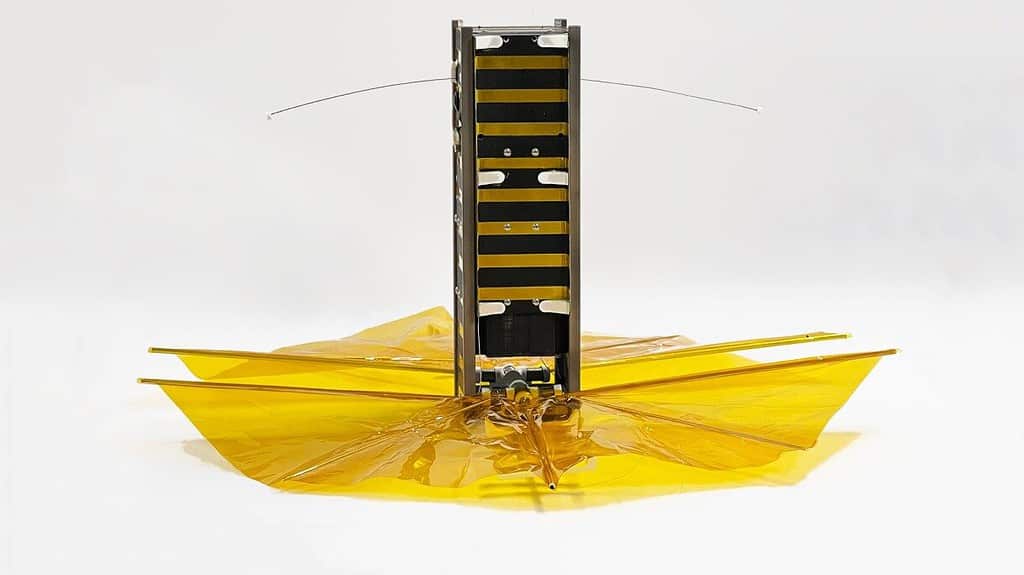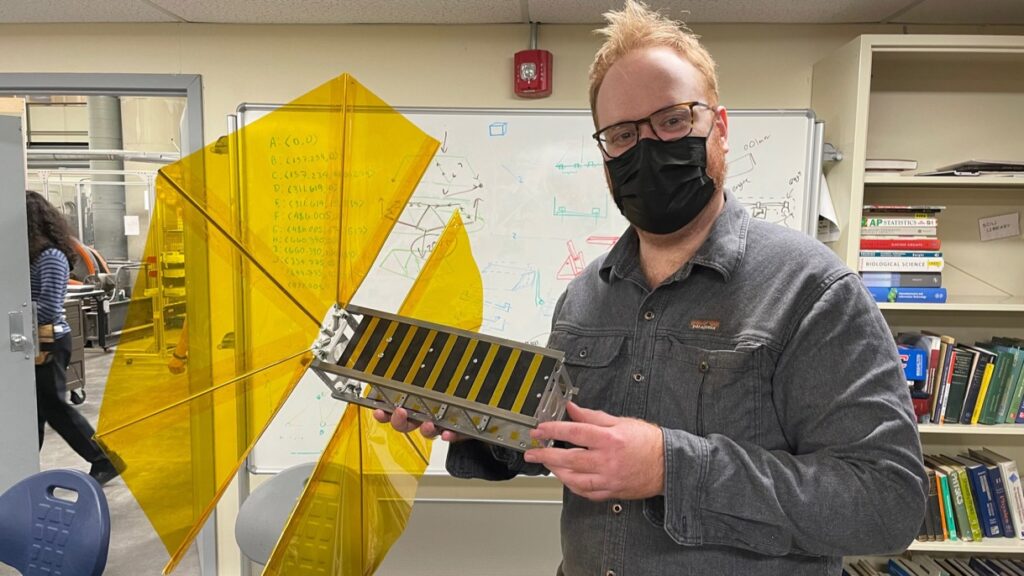
Conventional satellites have two big problems. First, they cost millions of dollars to build and even more to launch. Second, when a satellite stops working, it can turn into space junk — an escalating problem that could wreak havoc in the future by making our planet’s orbit unusable. According to US Air Force Space Command, a “bread-loaf-sized cube” satellite made by a team of 40 students at Brown University (BU) could solve both of these problems for certain applications.
About 10 months ago, the satellite named SBUDNIC managed to get a lift on SpaceX Falcon 9 rocket, and it was successfully deployed in Earth’s orbit. SBUDNIC was built within a budget of $10,000 and yet, it is able to function well in the extreme conditions of outer space. What’s more interesting is that the satellite is entirely made out of components that you can easily find in any local hardware store.
What makes SBUDNIC so special?
In 2021, an Italian aerospace company D-Orbit informed the BU team about a satellite opening on the Falcon 9 rocket that was due for launch the following year. They also got to know that in order to secure a ride on the SpaceX rocket, the satellite was required to pass a battery of thermal, vacuum, and vibration tests. But the students weren’t phased by these challenges and decided to start working on SBUDNIC.
However, unlike the engineers at NASA or SpaceX, the BU team couldn’t afford to design and build a multi-million-dollar satellite. So they decided to make the best use of whatever resources and information that was available to them. Surprisingly, within a year they created a satellite from scratch that meet all the standards set by NASA and SpaceX for being called space-ready.
While conventional satellites are designed using advanced materials, expensive data processing units, and hi-tech energy solutions, SBUDNIC runs on a $20 microprocessor that’s popular among amateur robot makers. Its power supply unit contains 48 AA lithium batteries just like the ones that you’d find in a television remote, and as heat shields, the satellite uses reptile lamps in its vacuum chamber.
Also, this isn’t the first time Brown University students had sent a satellite to space. In 2020, a different team from BU developed a satellite called EQUiSat. They deployed the satellite with the help and approval of NASA, it revolved around Earth 14,000 times and eventually turned to ashes when it re-entered Earth’s atmosphere.
While EQUiSat was a 1U (cube satellites or CubeSats are generally classified by the number of U, or 10cm cube units, that they occupy in space) designed to test if a flashbulb LED mounted on the satellite (like the kind used in a camera flash) could be detected from the ground. SBUDNIC is a 3U satellite (3U is three 10cm cubes stacked end on end, so SBUDNIC is 10cm x 10cm x 30cm) which is designed to test a drag system that speeds deorbiting time. For this purpose, it has a drag sail made of Kapton polyimide material.
Rick Fleeter, an engineering professor at BU who worked as an advisor on both projects, told ZME Science:
“EQUiSat and SBUDNIC are examples of novel uses of space and of low complexity. I believe we have worked too hard at making space complicated and not hard enough at making it simpler. A bicycle is much simpler and cheaper and smaller than a luxurious car, but it is still quite useful and in some uses may be preferable to the car. That is our goal overall, simplicity low cost, and usefulness. We are also saying that a useful satellite can be built quickly by a less experienced smaller group on a limited budget. The example is helpful, particularly in countries lacking well-funded space research.”
How can SBUDNIC solve the space junk problem?
Generally, most satellites can operate for up to 25 years but it can take about the same amount of time to deorbit itself in the absence of a sail. SBUDNIC, on the other hand, is designed to last only a short time. and is equipped with a 3D-printed sail. The satellite was deployed at an altitude of 520 km and is already inactive after its brief mission was successfully completed. The sail is now pushing the satellite toward Earth and the latest data suggest that it is now at 470 km from Earth.

Marco Cross, chief engineer on the SBUDNIC project, told ZME Science: “SBUDNIC is a proof of concept of a method that other satellites can use in the future. SBUDNIC does nothing to remove existing space junk from orbit- that was never the goal. The drag sail basically acts like a parachute which slows the satellite down as it orbits the Earth. The satellite is now electrically dead. However, the drag sail is passive and is still deployed. It will continue to function until the satellite burns up in the atmosphere on reentry.”
So the basic idea here is that instead of contributing to the existing space junk, dysfunctional satellites in the future can be made to reenter Earth’s atmosphere, where eventually they’ll get burned and their remains won’t be floating in space.
According to Ross, it’s not about making satellites reusable, but this is a cost-effective solution for preventing the buildup of space debris in the future.
You can find more about SBUDNIC here.
Was this helpful?



